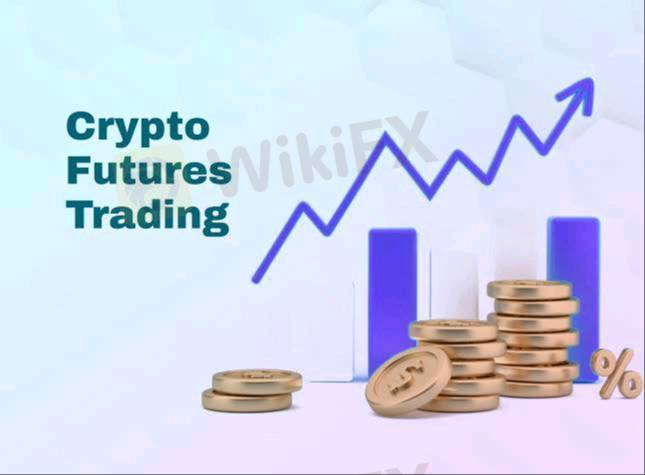
2025-01-30 15:36
IndustryBasics of Crypto Futures Trading
#firstdealofthenewyearFateema
Crypto futures trading allows traders to speculate on the future price of a cryptocurrency without owning the underlying asset. It’s a popular way to hedge risk or amplify gains using leverage. Here’s a breakdown of the key concepts:
1. What Are Crypto Futures?
Crypto futures are derivative contracts that obligate traders to buy or sell a cryptocurrency at a predetermined price on a future date. Unlike spot trading, you don’t own the actual asset—you’re trading price movements.
2. Key Terminology
Long Position – Betting that the price will go up.
Short Position – Betting that the price will go down.
Leverage – Borrowing funds to trade with a larger position size. (e.g., 10x leverage means a $100 trade controls $1,000 worth of assets.)
Margin – The collateral required to open a leveraged trade.
Liquidation – Occurs when your margin balance is insufficient to cover losses, forcing your position to close.
Mark Price – The fair price of an asset used to avoid market manipulation and unnecessary liquidations.
Funding Rate – A fee exchanged between long and short traders in perpetual futures to keep prices aligned with the spot market.
3. Types of Crypto Futures
Perpetual Futures – No expiry date; traders can hold positions indefinitely, but funding fees apply.
Fixed-Term Futures – Contracts with a set expiration date (e.g., quarterly futures).
4. Advantages of Futures Trading
✔ Leverage – Amplifies potential gains with less capital.
✔ Shorting Opportunity – Profiting from price drops.
✔ Hedging Strategy – Helps protect against volatility.
✔ Liquidity – High liquidity compared to spot markets.
5. Risks Involved
⚠ Liquidation Risk – High leverage increases the chance of losing your margin.
⚠ Funding Fees – Perpetual futures require periodic funding payments.
⚠ Emotional Trading – Fast price movements can lead to panic decisions.
Would you like insights on specific trading strategies or exchanges for futures trading?
Like 0
mmaette100
Trader
Hot content
Industry
Event-A comment a day,Keep rewards worthy up to$27
Industry
Nigeria Event Giveaway-Win₦5000 Mobilephone Credit
Industry
Nigeria Event Giveaway-Win ₦2500 MobilePhoneCredit
Industry
South Africa Event-Come&Win 240ZAR Phone Credit
Industry
Nigeria Event-Discuss Forex&Win2500NGN PhoneCredit
Industry
[Nigeria Event]Discuss&win 2500 Naira Phone Credit
Forum category

Platform

Exhibition

Agent

Recruitment

EA

Industry

Market

Index
Basics of Crypto Futures Trading
 Nigeria | 2025-01-30 15:36
Nigeria | 2025-01-30 15:36#firstdealofthenewyearFateema
Crypto futures trading allows traders to speculate on the future price of a cryptocurrency without owning the underlying asset. It’s a popular way to hedge risk or amplify gains using leverage. Here’s a breakdown of the key concepts:
1. What Are Crypto Futures?
Crypto futures are derivative contracts that obligate traders to buy or sell a cryptocurrency at a predetermined price on a future date. Unlike spot trading, you don’t own the actual asset—you’re trading price movements.
2. Key Terminology
Long Position – Betting that the price will go up.
Short Position – Betting that the price will go down.
Leverage – Borrowing funds to trade with a larger position size. (e.g., 10x leverage means a $100 trade controls $1,000 worth of assets.)
Margin – The collateral required to open a leveraged trade.
Liquidation – Occurs when your margin balance is insufficient to cover losses, forcing your position to close.
Mark Price – The fair price of an asset used to avoid market manipulation and unnecessary liquidations.
Funding Rate – A fee exchanged between long and short traders in perpetual futures to keep prices aligned with the spot market.
3. Types of Crypto Futures
Perpetual Futures – No expiry date; traders can hold positions indefinitely, but funding fees apply.
Fixed-Term Futures – Contracts with a set expiration date (e.g., quarterly futures).
4. Advantages of Futures Trading
✔ Leverage – Amplifies potential gains with less capital.
✔ Shorting Opportunity – Profiting from price drops.
✔ Hedging Strategy – Helps protect against volatility.
✔ Liquidity – High liquidity compared to spot markets.
5. Risks Involved
⚠ Liquidation Risk – High leverage increases the chance of losing your margin.
⚠ Funding Fees – Perpetual futures require periodic funding payments.
⚠ Emotional Trading – Fast price movements can lead to panic decisions.
Would you like insights on specific trading strategies or exchanges for futures trading?
Like 0
I want to comment, too
Submit
0Comments

There is no comment yet. Make the first one.


Submit
There is no comment yet. Make the first one.